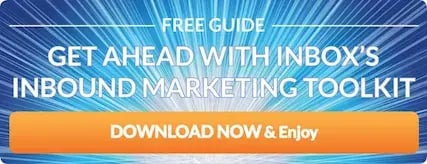Why Segmenting Your Email Lists Is Important

The most important aspect of marketing is to know your target market. You may have several buyer personas but it would be disastrous to treat them all the same. Segmenting your contact database into lists according to the specific target market in which they fall helps you personalize and contextualize your communications. It allows you to send more messages that promote trust, furthering your relationship building. Sending an irrelevant or repeat email to a prospect signals to them that they aren't special to you. For the purposes of email marketing, list segmentation is the best way to get the right message in front of the right audience. Take the time to break out your contact database.
A recent study showed that proper list segmentation can increase open rates by 20% to 40%, which results in corresponding higher click-through rates. What does that mean? If there is an an industry-wide average open rate of approximately 22%, proper list segmentation boosts your chances from less than 1 open in 4 to almost 1 open in 3. That is a significant advantage.
What is a list?
Lists are the different ways that you can break up your contacts into smaller segments based on their similarities or based on different actions they may have taken in the past. These contact segment lists can be cut and combined in a number of different ways, including:
- Industry
- Demographic information
- Company size
- Date of birth (who isn't delighted by a birthday message?)
- Job role
- Geographic location
- Past actions (such as a previous download)
- New customer or repeat customer
- Stage of the buyer's journey (awareness, consideration, decision)
What are the benefits of lists?
- Lists help you store, segment and market to all the people in your database based on their shared qualities.
- Lists are essential to the process of closing leads into customers, as they allow you to organize your contacts based on their common needs and priorities and thereby personalizing your outreach.
- Lists allow you to add context to your outreach like referencing a previous email, or a download / action the prospect may have already taken.
- Keeps your email out of the spam folder by only targeting relevant prospects.
Segmentation facilitates closing contacts, because you can use this information to design and implement marketing strategies that they will love because they are relevant. Once you have closed those leads into customers, you want to delight them into promoting your business. This is the foundation of the network effect. Happy customers become evangelists who then attract new strangers as they share their experience with your products or services with their own personal networks. This is the best way to turn your customers into a positive lever for growth.
Tailoring Communication Works
You have different types of customers, so it doesn't make sense to communicate with them all in the same way. As mentioned, you have long-term customers and new customers, repeat customers and single-time buyers. Providing outstanding customer support means understanding what makes your customers unique, and segmentation is a critical component of figuring that out.
Simply put, tailoring the way that you connect will improve engagement and boost conversion. Even if your company only focuses on selling one specific product or service, you still have different ideal buyers (target markets) who are at different stages of the buyer's journey. Buyer personas are absolutely imperative to your segmentation efforts. When you understand the different kinds of buyers that you have in your contact database, you can use that information to power your marketing, lead nurturing and communication with prospects and customers.
Segment Using Your Buyer Personas
There are many different pieces of information that you need to know to create effective buyer personas. Their background should, at a minimum, include:
- Role at company
- Education
- Demographics
- Goals
- Challenges
This information can be used to create email lists to segment your database. You've also got contacts in different stages of their buying process for your product or service. The vast majority of people who are going to fill out your website forms are going to be in the awareness stage. They're looking to conduct preliminary research from subject matter experts in your industry. They're really early in their buying process. You're going to want to communicate with that list differently from the list of contacts who are in the consideration stage and the decision stage. Those 3 stages should form 3 different lists within each buyer persona. Segmentation allows you to send the right people the right message at the right time. It becomes really powerful when it's used to power your marketing initiatives. Content that uses segmentation to provide context allows you to recreate personal connections and scale everyone who interacts with your brand online.
Best Practices For Using Lists
These are the 4 best practices that if followed will transform your contact database into your strongest inbound business assets.
- Always have an end goal for your list
- Segment people based off of both implicit and explicit data
- Use proper naming conventions
- Analyze your efforts to always improve your segmentation strategy
